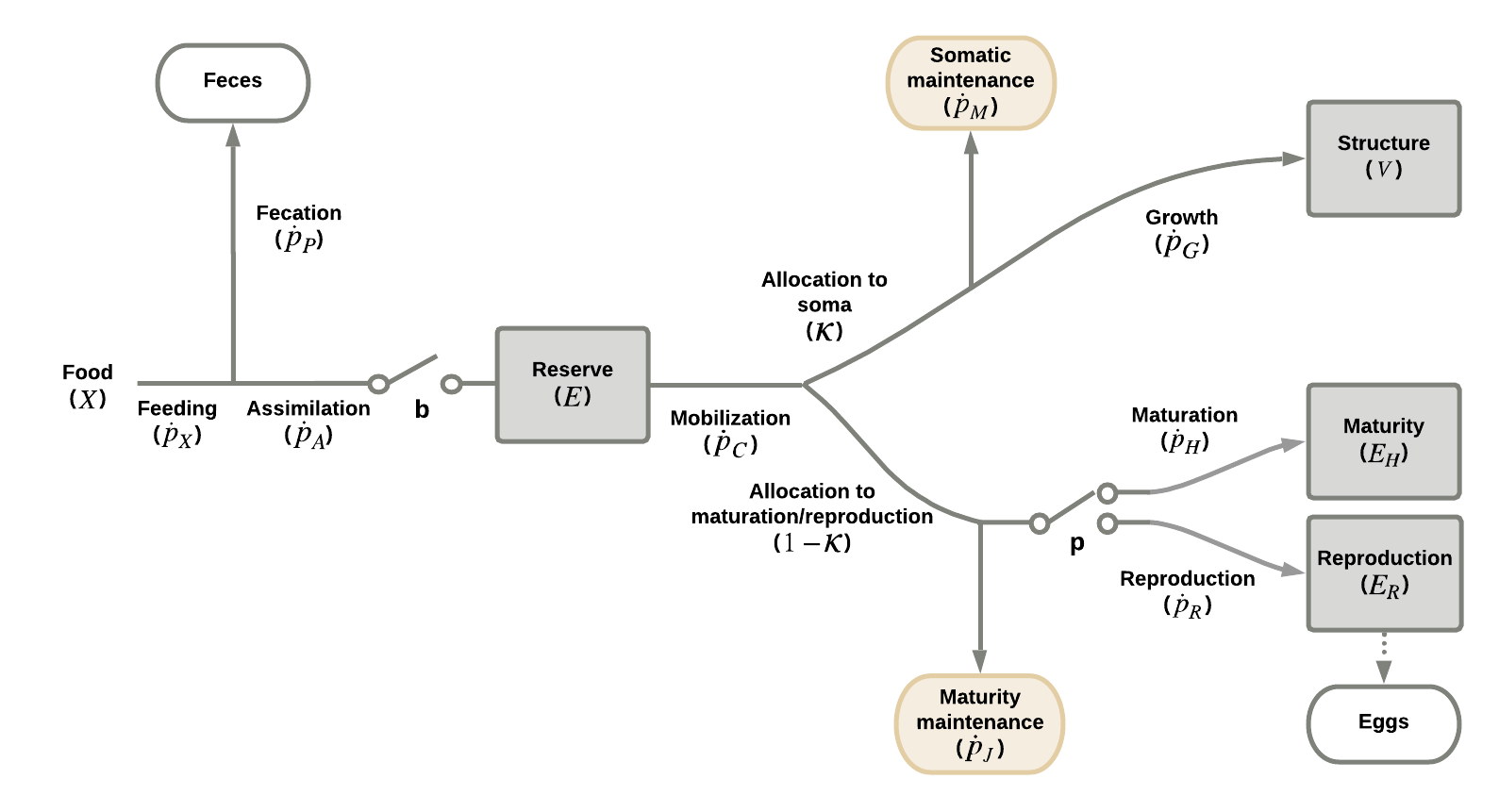Dynamic Energy Budget theory predicts smaller energy reserves in thyasirid bivalves that harbour symbionts
Abstract
Dynamic Energy Budget (DEB) theory describes the ecophysiology of individuals and distinguishes between the biomass of an organism that functions as an energy reserve and as a structure. DEB theory offers a robust framework to infer and contrast energy allocation patterns, even in data-poor species. We used this approach to compare two thyasirid bivalves that have scarce data: Thyasira cf. gouldi and Parathyasira sp., which co-occur in a seasonal environment, show similar life history features, and are both particulate feeders. However, T. cf. gouldi hosts chemosymbiotic bacteria that are digested as an additional resource, and how this mixotrophy affects the energy budget of these chemosymbiotic thyasirids is unknown. We used allometric and life history data to parameterize a DEB model for each species and found that symbiotic T. cf. gouldi has a smaller fraction of its biomass as an energy reserve relative to Parathyasira. A smaller energy reserve, in turn, implies reduced energy assimilation and mobilization fluxes, lower somatic maintenance costs and growth rate, and larger energy allocation to maturity and reproduction in symbiotic T. cf. gouldi. For a thyasirid inhabiting an environment with seasonal forcing, these life history traits may represent an evolutionary strategy where the symbionts function as a partial energy reserve. Our results elucidate a potential role of the chemosymbiotic bacteria in the ecophysiology of a bivalve host, and highlight how the symbiotic association is likely to alter the energy budget of a mixotrophic thyasirid.
